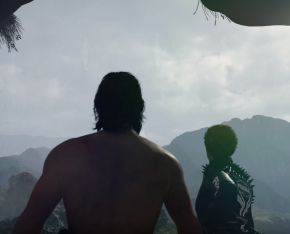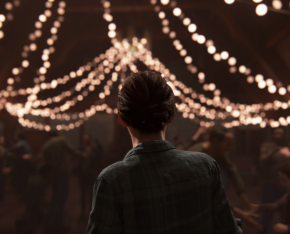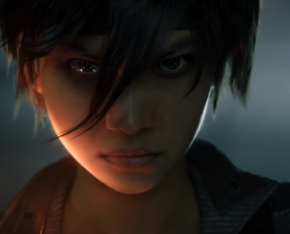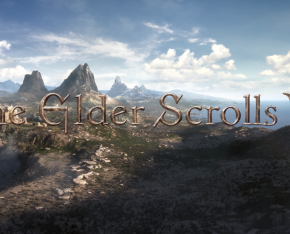By Anni Simpson on September 18, 2013 at 4:35pm
I was one of the many people who was disappointed by the original "Hearthstone" announcement, hoping for something larger like the next "Diablo III" expansion or the next installment to "World of Warcraft. " I’m a big fan of the "Warcraft" universe and have been for years, but until I actually saw the beta for myself, I was not enthused.
Until I saw the beta, that is.
“Hearthstone” is interesting, because it lifts elements that are standard in other trading card games without being overly complex, a problem with aforementioned genre. The mechanics are easy to understand, which Blizzard helps by adding in-game hints and instructions as you progress further into the game. And as a recent convert to “MTG,” I was eager to try it out.
Game Play
The game play is very similar to “Magic: The Gathering” in that you draw a card, use your cards to gain abilities and/or deal damage, and you have summoning sickness on creatures drawn that turn (unless otherwise noted). However, it’s also a little bit different.
There is a mana cost to each card; you generate one new gem of mana every time your turn comes up. When you attack a character, you can attack that character directly unless they have a card on the table that requires you attack it first (“taunt”). Taunt creatures work as a defensive move to protect the character from taking damage directly and dying. Additionally, each character type grants a special ability you can use provided you have the mana available (e.g., +2 to character health for a priest, equip a 1/2 dagger or give your weapon +1 attack for a turn as a rogue).
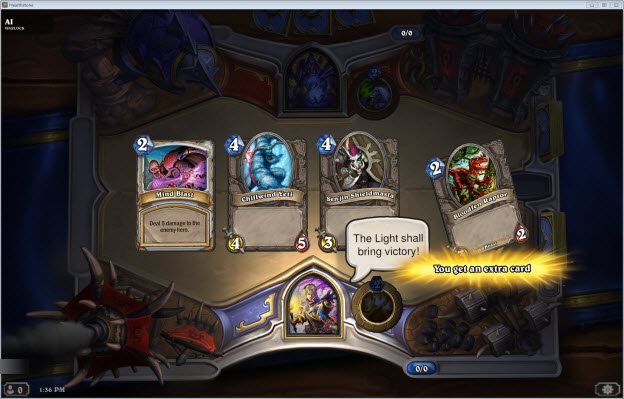
As with any game, I needed a little bit of an “easy start” to feel comfortable in the game. “Hearthstone” makes this easy by allowing you to battle an AI. I did so by choosing a Priest and battling an AI Warlock. I wanted the ability to heal in case I got completely destroyed. However, I didn’t really need it. I had several cards that worked as “taunt” mechanisms, protecting me directly. Taunt creatures can still attack, so by the time mine were destroyed by the Warlock’s cards, I was still at 21 while he was at 5. Easy win.
I’d have been disappointed by the easy win if I didn’t use AI battles to teach myself how to work the game. It appears that I used AI battles as intended, because there is a cap on experience to your cards using this feature. This is actually a really stellar feature, because it removes the pressure of learning immediately in front of an audience impatient to be anywhere near new players (“League of Legends” anyone?).
In addition to AI battles, you can also complete quests (e.g., win two games with a rogue) for extra rewards, “Play” (which pits you up against a player of equal skill), and “Arena” (which has you make a deck with random cards quickly). “Play” was my favorite, because again, it removed the pressure of having to compete against people who may be miles better than you by having you compete against people of comparable skill and focus on the game itself.
Once you’re comfortable with the “Hearthstone” game play, you can begin building custom decks with the character types from “Warcraft” (Rogue, Warlock, Shaman, Warrior, Priest, Monk, Druid, Paladin, Hunter, Death Knight). The custom deck process is really easy and includes step-by-step instructions from Blizzard to help you along. Again, this is beneficial. Blizzard gets a lot of flak for “pandering to the casuals,” but when they roll out a new game no one’s familiar with, I don’t see the harm in making sure every player gets the game (and how it’s different from the many, many other card games out there).
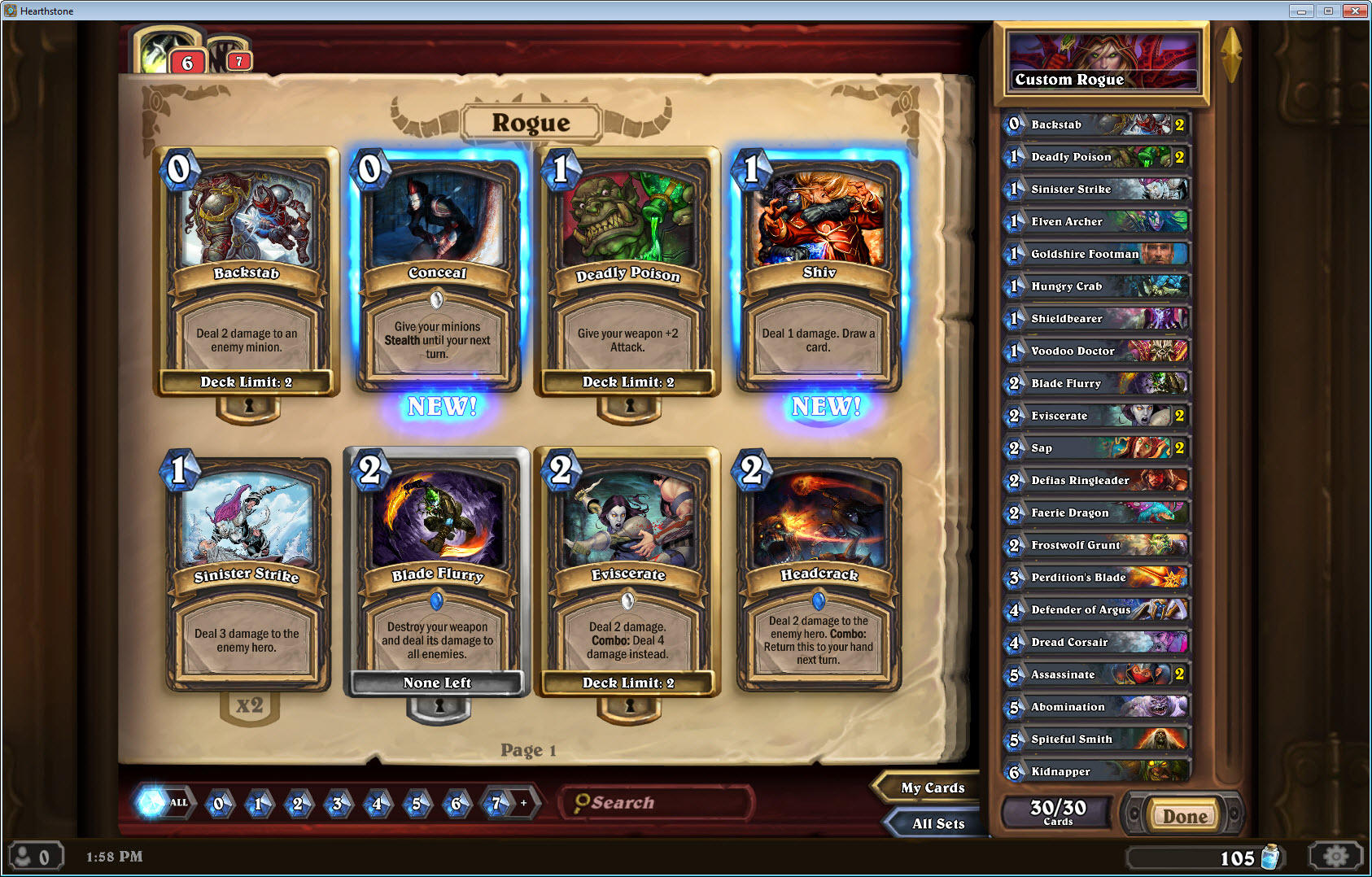
Although the game was really easy to grasp because of the in-game hints and the AI practice battles, it was also easy to grasp because of just how derivative from other games it really is. Although there aren’t as many special abilities as I’ve seen in “MTG,” the game works at a basic level in exactly the same way as other card games (draw, drop cards based on mana, attack, defend, don’t die). “MTG” and others have had years to fine tune their IP, so maybe this criticism isn’t fair, but in the meantime, it wasn’t as interesting as I’d hoped it’d be when I finally got to see it myself.
It should be noted that you can also “purchase additional Expert Packs from the store” at $1.50 a booster pack. Of course, I’m not surprised; this is how all games in the genre work, and Blizzard/Activision would be stupid to operate otherwise. However, you can also earn booster packs in-game, giving it somewhat of an edge.
Automatically granting mana every round was also a negative for this reason; there was no skill required in trying to balance your mana if you got a particularly crappy hand with only one or two for several rounds. You can rebound from that sort of problem if you’re really skilled in other games, but mana’s almost a non-issue in “Hearthstone” to the point where sticking mana cost on cards seems arbitrarily.
Finally, the “damage” and “defense” in a card is almost untouched by the game. Every card has those attributes and they’re certainly used, but it doesn’t tell you what those attributes are (possibly relying on your experience with other IPs to know). Having defense on cards almost seemed meaningless in situations where you could just attack the target character instead of a minion unless there were “taunt” cards on the table. Pointing at the character took care of all the math and strategy that would have otherwise gone into a turn. Again, unless there’s a “taunt” card available, you could just attack the character with everything you had and call it a day. Presumably, this gets better as you play with increasingly skilled players, but I didn’t feel the need to go any further than I already had.
Graphics
The graphics are what you’d expect from a “Warcraft” game. They’re pretty in a slightly cartoony way that isn’t unfamiliar to anyone who’s played “World of Warcraft.” On one hand, this is good, because it doesn’t necessarily bar players without high-end rigs from playing the game. On the other hand, it’s nothing special. They did not update the character images in any way. I even unchecked the “Fullscreen” option, because the introduction screen was almost fuzzy on my monitor (1920x1200).
The only thing that really stood out were animations, which were, again, pretty cartoony and clichéd: attacking other creatures/cards, victory and loss animations, healing, and instruction bubbles. They were short, quick, and to-the-point. They also helped understand exactly what just happened. It’s not like numbers don’t speak for themselves, but I appreciated the visual cues they used.
That said, it really isn’t anything special. These are the same types graphics Blizzard has used for years, and so there’s nothing new to be said about them.
Conclusion
While I got a kick out of the game, I found it highly derivative of other games. “WoW” has been hoisted on a pillar as the MMO, reigning higher than all those that were supposed to kill it. It’s surprising to see Blizzard clearly on the other side of this dynamic: producing a game that is very similar to others, others that have had years to finely tune their game. Slapping familiar faces on the cards and characters doesn’t make me like it any better. Continuing their stories does. Again, one of the things that "did it for me" in Pandaland was Anduin's progression as a priest and a diplomat to his people in spite of being captured and held against his will. Healing myself for +2 if I get screwed because of Anduin's priest healing skill doesn't.
The graphics were okay, but again, they’re not anything to write home about.
If I’m going to put significant time and money into a game, I’d rather it be a well-established game with strongly understood rules in a large audience. There are local tournaments for other games, which are working on new iterations of the game with new cards to keep things interesting. (Anyone else going to the “MTG” midnight release this Friday?) Of course, they alleviate this problem somewhat by allowing the in-game earning of booster packs.
Something about having “real” cards appeals to me, as well. When I get bored or tired, I can sell or pass on the cards, put them in a collection for nostalgia, or return to them years later with no servers to worry about.
I’d give it a try if you’re into card games (it’s free-to-play, after all), but if you’re not particularly interested, I wouldn’t worry about it. Although I loved the “Warcraft” and “Diablo” franchises, “Hearthstone” failed to deliver what made me love them for years in this game: lore and characters. Part of what keeps me into “Warcrack” is my long-time connection to my characters, and what kept me interested in “Diablo” was the story. The impression I got from “Hearthstone” is that I’m supposed to like it, because I’m supposed to like cards, especially cards that have a blood elf or goblin face on it. That misses the point.
The point is I expected more imagination, and there wasn’t any that I could see. Here’s to hoping the game improves by the time it opens up to all players.






